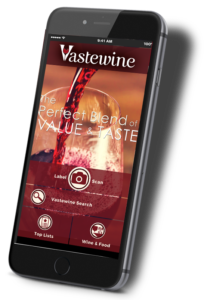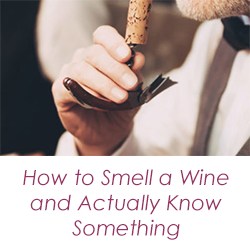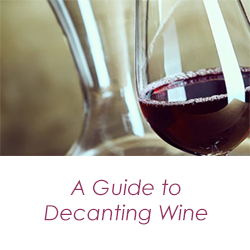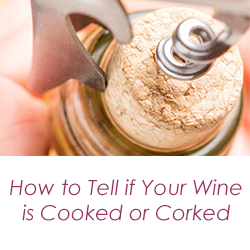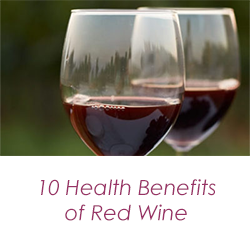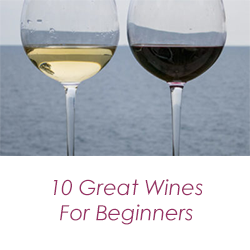Tips on Wine Tasting
– Am I Supposed to Gargle It?
REMINDER: 7pm Wine Tasting With Coworkers at “You’re Gonna Look Stupid Wine Bar”
 Oh great. I forgot that tonight is the night. What am I going to do? All my coworkers do is talk about wine! They know everything! Yeah, I love wine, but I have no idea how to conduct myself at a tasting. Not only am I going to look stupid, but I’m going to sound like an idiot trying to describe what I’m drinking. I don’t even know how to properly hold the glass! Do I have to wear a sweater? Do I need to speak French? This is going to be a disaster!
Oh great. I forgot that tonight is the night. What am I going to do? All my coworkers do is talk about wine! They know everything! Yeah, I love wine, but I have no idea how to conduct myself at a tasting. Not only am I going to look stupid, but I’m going to sound like an idiot trying to describe what I’m drinking. I don’t even know how to properly hold the glass! Do I have to wear a sweater? Do I need to speak French? This is going to be a disaster!
Oenophobia…..the fear of wine.
For everyone who has enjoyed drinking wine, they probably have had this fear at some point in their life. I know I did the first time I got stuck at a college party with some serious wine drinkers. I fumbled my way through it, just saying “oaky” over and over. Turns out wine coolers weren’t supposed to taste like Oak. Lesson learned.
It shouldn’t be stressful, however. Wine is meant to be enjoyable, fun, and taste good. Who is the most important person involved when tasting wine? The server? Bartender? Friends or coworkers? Drunk guy in the bathroom? No. It’s you. The wine is meant for you to enjoy. If it’s not good, to you, then just say so. You don’t have to make up some crazy description of a wine when tasting it to sound sophisticated and cool. Even if everyone is raving about a wine, if it doesn’t please your palate, don’t be afraid to say so.
The art of tasting wine has been around for thousands of years. Professional wine tasters have been around more than a century. To enjoy wine, you don’t have to be a professional. You just have to like it. Sure, it helps to know some basics if you are going to participate in group wine tastings, and that’s why we here at Vastwine are here to help.
Tasting, Evaluating, or Drinking? What is it that I’m doing here?
Before we get into the basics of “wine tasting”, it’s important to note that there are three different ways of putting wine into your mouth! First, there is drinking wine. Simple enough, this is for pleasure, relaxation and enjoyment. There is no need here for me to tell you how to “drink” wine. Evaluating wine is a more scientific way of saying “hey, let’s get a group together and compare wines and critique them.” Evaluating wines will definitely take a lot of practice, study, and knowledge. So yeah, let’s skip that for now. The third way of partaking wine is “tasting” it. Sounds kind of like drinking it, huh? Well, it’s a little bit deeper than that. Tasting wine is to better help you understand the wine and its unique characteristics, and most importantly, to better help you figure out if you like the wine.
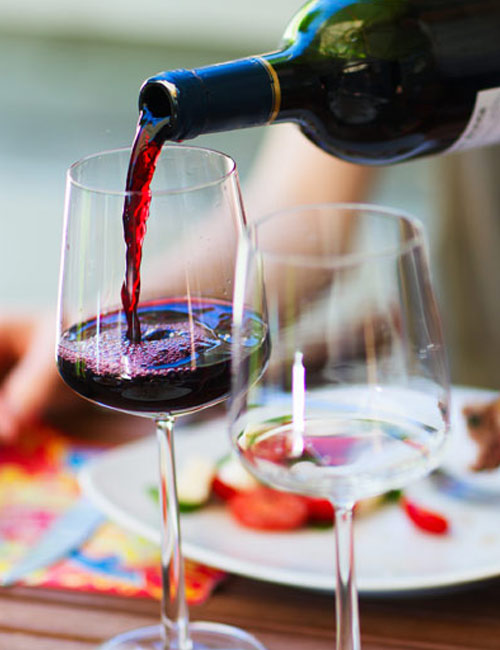
Time To Taste! Let’s Do This!
Let’s just get this out of the way first and foremost: Don’t be scared and fear the wine! What you like is what you like, and it doesn’t matter what Johnny Vinoboy next to you is saying about it! What you taste is not right or wrong. It’s your palate, and if you like it then great! If not, then say so. Ok whew, got that out of the way. Now it’s time to help you understand the wines a little more as you taste them.
To taste wine, you are going to need all of your senses. Sight, smell, taste, and touch.
It’s not as hard as you might think. I mean, we’ve all been using these all our lives with pizza and cheeseburgers, so it’s not rocket science.
We will begin with sight.
When you look at a pizza, for example, you look for the basic characteristics of a pizza. You are looking at the color and make up of the pizza. Same with wine. First, tilt your wine glass (preferably over a white surface if available), and notice the color. Depending on what type of wine you are tasting, it should have certain color characteristics. For example, Cabernet Sauvignon, a red wine, will have its own basic color spectrum. Dark to light red, depending on how it was barreled, how long, etc. The color will tell you a lot about the wine. Knowing the basic color characteristics of various wines will involve a little homework, and we will definitely help you with that in a different article. Right now, though, we are focusing on getting you prepared with the basic senses you will use.
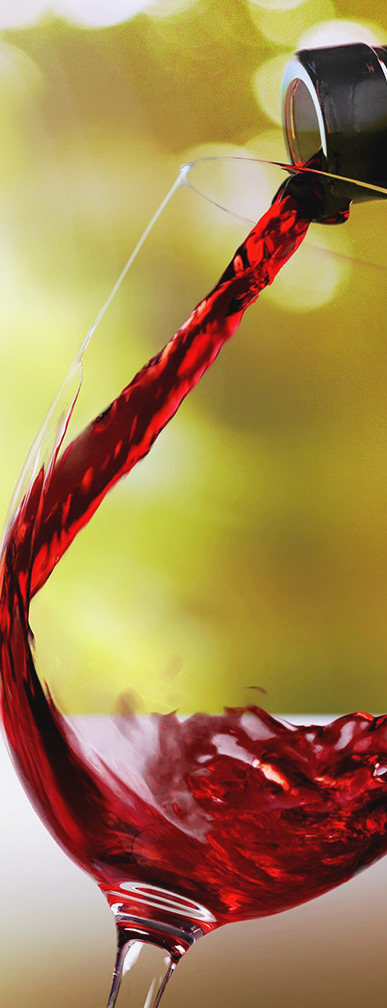 Ok, you’ve looked at the wine. Now what? Sniff it.
Ok, you’ve looked at the wine. Now what? Sniff it.
When smelling a wine, to each his own. After gently swirling the glass to get those aromas flowing, some will take a short sniff. Or several short sniffs. Others like to stick their nose in and keep it for a long inhale. Try them all to see what works best for you. Smelling wine is both complex and simple. It involves you using all the aromas you have trained your nose to smell for your entire life. Matter of fact, it’s good practice to start smelling everything around you and “saving” it in your aroma database deep in your brain. When you are first starting to get the hang of sniffing wine, however, you need to keep it simple. First off, does the wine smell fruity, earthy, spicy, or a wet dog? Once you get the basic smell, then you can expand to more detailed flavors like Oak, Pine, Strawberry, and even Skunk. There is a handy tool out there called The Davis Wine Aroma Wheel that can help you narrow down exactly what it is you are smelling. Once again, a little homework, but nothing overly complicated. It’s scents you have accumulated all your life.
Finally! You looked at it. You sniffed it. You haven’t spilled it yet, so now you can taste it!
There are many things that will enhance the tasting of a wine, such as decanting, choosing the right wine glass, and temperature. Knowing the basics of which wine needs what will, yeah you guessed it, require a bit more homework. Right now, though, we are going to focus on getting it in your mouth and figuring out what to do with it after that.
When tasting wine, unlike just drinking it, you are giving it a test. You are looking for balance, structure, how it feels on your palate, sweetness, acidity, and complexity. First, you want to take a decent sized sip of the wine. Don’t use a funnel like you are at a college keg party. But you want enough to get the full body of the wine. Tasting it like you are at a tea party with stuffed animals is going to eliminate much of what the wine is about. So get a nice, good sip.
Next, while the wine is still in your mouth, gently inhale some air. Swirl the wine around in your mouth. Use your tongue, roof of your mouth, teeth, and whatever else you have in there. Feel the wine. If you need to spit it out and take another sip, feel free. Just make sure there is actually a place to spit it out. Many times a bucket will be available if you are at a formal tasting.
I recommend that when you first start tasting wine, whether by yourself, a spouse, your cat, or with a club, that you take notes. Try several wines and compare them. When taking notes, write down the initial taste. Did it taste fresh and fruity? Was it dusty and old? Use your most basic senses here. You know what tastes good and what doesn’t. After you have chewed on it for a bit, did it feel light or was there a stronger, full bodied taste of alcohol? Sour, spicy, bitter?
Remember, we are focusing on the tasting basics here. The first several times you do this will seem awkward and will take getting used to. Taking notes, however, will better help you understand the next wine you try, and so forth. The complexities will begin to get deeper and deeper the more you taste. One recommendation would be to start with a wine that you are already not only familiar with, but have enjoyed in the past. If it’s Merlot, for example, make your first tasting a Merlot party. Try several wines, preferably in the same price range but from different regions. Take notes. Do the homework on what a Merlot is supposed to look like, smell like, and taste like. Make charts. Visualize and store the different aromas and tastes in your brain in preparation for the next experience. Pretty soon you will have all the confidence in the world to go to that coworker wine tasting that you would have normally dreaded.
Most importantly, though, is that you enjoy it. The process, the smells, the company of others, and of course, the wine.
Sign Up to be a Tasting Partner!
Enter your email below and you will be the first to know about new wines, recipes, wine articles, and new additions to the Vastewine app.
